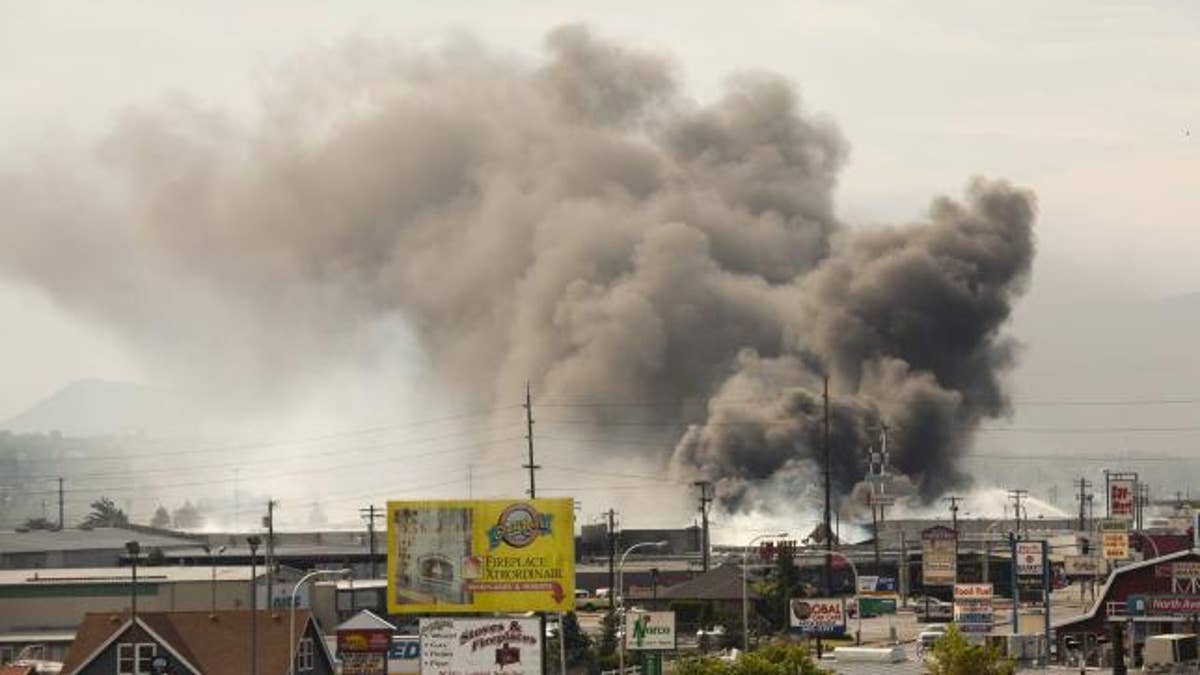
June 29, 2015: Smoke from burning commercial buildings that were ignited by the Sleepy Hollow fire rises above Wenatchee, Washington. (REUTERS)
Air pollution from wildfires may trigger heart attacks, cardiac arrest or other heart disease symptoms, Australian researchers say.
“Finer particulate matter is present in extremely high concentration in smoke,” said lead author Anjali Haikerwal of the Center for Occupational and Environmental Health at Monash University in Victoria.
“These particles are harmful because they are small and easily inhaled,” Haikerwal told Reuters Health. The respiratory risks are well-known, but heart risks have been harder to analyze, she said.
Past research has shown that tiny soot particles from combustion - such as vehicle exhaust or power plants - that are 2.5 micrometers or smaller can be inhaled and enter the bloodstream. This so-called PM 2.5 air pollution has been linked to inflammation and heart disease.
In December 2006 and January 2007, Victoria experienced a long-running series of wildfires that burned about one million hectares (2.4 million acres) of land.
The researchers used medical records to determine the number of out-of-hospital cardiac arrests among people age 35 or older in the metropolitan Melbourne region and in more rural areas of Victoria, which has a total population of more than five million.
They also modeled the smoke dispersion during the wildfire period, predicting regional air quality based on the location and intensity of the fires.
As reported in the Journal of the American Heart Association, there were 457 out-of-hospital cardiac arrests, 2,106 emergency department visits and 3,274 hospital admissions for coronary artery disease during the fire period.
Accounting for temperature and relative humidity, the researchers found that as the concentration of fine particulates in the air increased over about a two-day period, the risk for cardiac arrest among men and people over age 65 increased. The risk for ER visits due to coronary artery disease also rose, particularly among women.
Fine particulates are much more abundant in wildfire smoke than in traffic or industrial pollution, Haikerwal said.
“We advise the general population . . . to stay indoors, to maintain medication, if they are worried at any stage due to a health condition to seek immediate help,” Haikerwal said.
Although this was only an observational study and did not establish cause and effect, the results may influence public health messaging in areas prone to wildfires, like Australia, she said.
Residents are already alerted to wildfire events in Australia, but the messaging could be further targeted to the elderly or people with preexisting conditions, who are at highest risk, she said.
